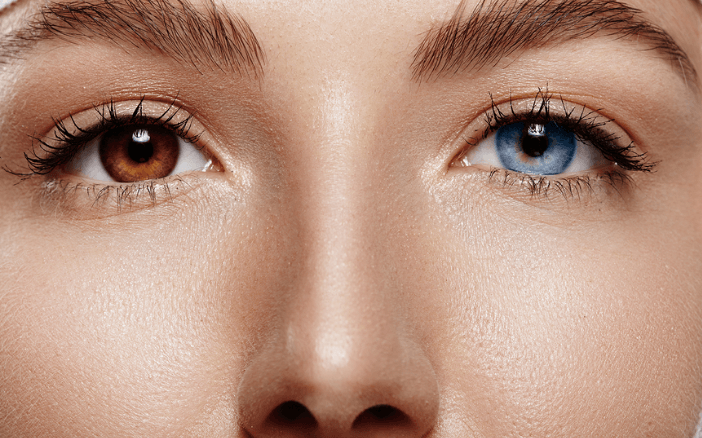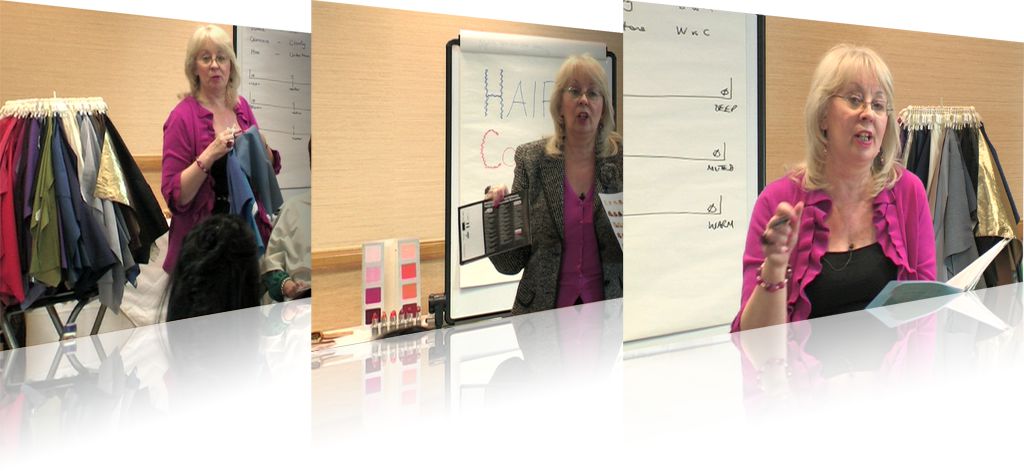Hi Kim, Just one more question before I purchase the Colour Analysis Training in a Box. Are there examples and info given of Asian women in the videos and notes?
Eurasia
Dear Eurasia,
A good training course should teach you how to analyse ANY combination of hair, skin, and eye colours.
And because of that, in every single one of my training courses, I make no distinctions between any of the different ethnicities.
The concepts used to analyse colour directions for any single person – whether they’ve got black skin, white skin, yellow, green or sky-blue pink skin – are exactly the same.
Therefore, I do not specifically reference Asian skin, Caucasian skin, or any other ethnic type in my training.
My approach has always been that you treat each individual client as an unique person (because they flippin’ well are!) and use the concepts of colour analysis to calculate or diagnose what suits them as an individual.
As I have never understood why anyone should consider this a problem, I do not include examples of different colour skin types in my training course notes.
If I had, I would have had to include all the different types to cover every ethnic group in the world and the course would have been at least three times as long and I would have been bound to miss one or two groups out which might have upset someone… too hideous to think about. No, I’m glad I didn’t get involved in all that. There’s absolutely no need anyway…
My colour training prepares you to ‘colour analyse’ absolutely everyone
To be honest, Eurasia, I haven’t a clue where you could go to specifically learn about colour analysis for Asian ladies only. I’m not aware of any training companies that offer courses based around one specific ethnic group.
In any case, how can you be sure that you’re only ever going to diagnose only Asian clients for the rest of your life?
You should be able to analyse ANY type of ethnicity that you might stumble across
For instance, I have the whitest skin on the planet but over my 40+ years in this business I’ve diagnosed hundreds of clients from every single ethnic group – Caucasian, Afro-Caribbean, Hispanic, Oriental, and Asian. Again, a thousand apologies if I’ve missed anyone out.
Not all courses teach this
It is a crying shame that some of the larger training companies don’t seem willing to address this issue at all.
For instance, I have two wonderful consultants, Bertha and Mertha, who are Afro-Caribbean ladies living in London.
When they were originally looking for a course in colour analysis, they telephoned most of the other training companies who told them that they could not provide specific training for ladies of colour.
One very well-known company even said that they would not be able to enrol Bertha and Mertha on their training course! I was speechless when they told me, and they were (as you can imagine) more than angry!
They came to me after I’d told them exactly what I’m explaining here to you.
Since their colour analysis training, Bertha and Mertha have been able to happily apply the concepts I teach to people of all colour tones and types, and they came back twice more to train with me, in both Ladies’ Style and Men’s Image.
These ‘rules’ are just plain daft.
If you follow the ‘rules’ from some other training companies, their methods insist that you have to make a diagnosis which includes your client’s hair colour.
What if your client hasn’t got any hair!
Your client may be bald due to a medical condition or even by choice.
What if your client has two completely different eye colours?

Heterochromia is where one iris is a different colour from the other, or where there are two different colours in the same iris. It can be inherited or be due to disease or injury.
There are plenty of people around with heterochromia like Christopher Walken, Kate Bosworth, David Bowie, Dan Ackroyd, and Jane Seymour.
So all these ridiculous ‘rules’ about having to use her skin, hair, and eye colour to diagnose your client’s season is all total nonsense.
My solution to the nonsense?
Start with my guidelines on Page 13 in the Colour Analysis Training Manual, using hair and eye colour only – where apppropriate, of course!
You do NOT need to analyse skin tone
The table on Page 13 in the Improvability Colour Analysis Training Manual never mentions skin tone.
Because you don’t flippin’ need it!
I’m here to help with your first clients
What will be much more helpful for you is to work through the concepts in the course with your first volunteers / clients, make notes about your initial diagnosis, and discuss them with me.
You get 6 months’ personal email support from me when you purchase Colour Analysis Training in a Box
- Send me photos of some of the first clients you analyse
- Include your own initial written observations
- Then we can work through all the evidence together
If you only send me photos before you’ve done any diagnosis yourself and I tell you what I see, you will not learn as much as if you have already tried to work it out for yourself.
Don’t worry, I will tell you the truth but I’m never rude about your diagnosis. I remember what it was like in the early 1980s, trying to fathom this stuff out for myself, without a soul on the planet to ask!
My job is to help you develop your own style of working, and to give you hints and tips that I personally use, and have developed, from 40+ years’ experience, so that you can inject your own skills and personality into creating a service that your clients love and a business that brings you everything you want.
Follow the evidence
Then, Eurasia, you will be able to create an extra set of notes for yourself with examples and specific information about your own Asian clients…
… or any other ethnic group that you encounter!
The table on Page 13 is designed to be a starting point; a base line from which to launch your diagnoses.
You are Poirot or Miss Marple, a detective looking for clues, collecting bits of evidence that you will piece together like a jigsaw to create the final profile of how your client will look and feel her absolute best.
This isn’t rocket science.
Simply put your client centre stage, and work out what suits HER and no-one else on the planet.
Join the revolution.
Forget the daft ‘rules’ that you’ll find elsewhere.
Stuff the system. Put the client first!
